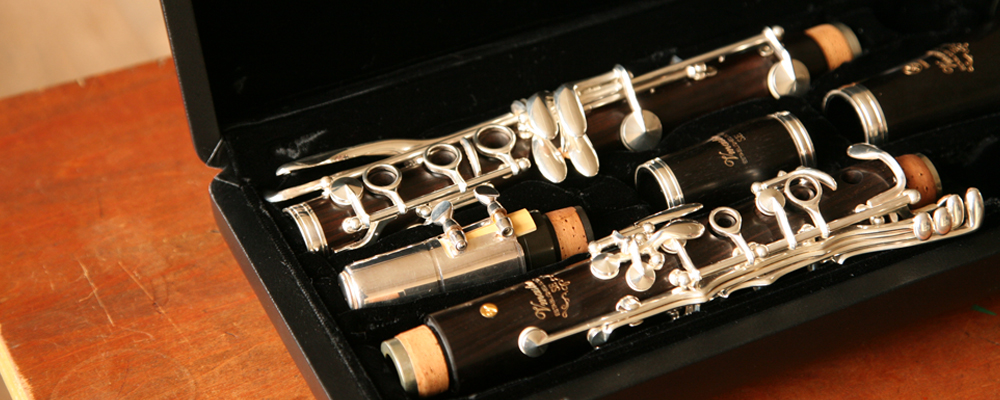Choosing a Clarinet
Criteria for choosing a clarinet
Choosing on the basis of the material
The hard wood known as grenadilla is normally used as the material for the body of a clarinet. The characteristics of grenadilla are that it can be worked as accurately as metal, and that compared to other woods it exhibits little change in dimension due to variations in temperature and humidity.
Notably, it is also used in ABS resin, which is extremely strong and highly resistant to variations in humidity.
An Öhler clarinet or a Boehm clarinet?
Clarinet systems can be broadly divided into two categories: the Öhler system and the Boehm system (including the German Boehm system). The two systems differ in several ways-not just in the internal diameter of the body and in the shape of the tone holes. Although direct comparison between the two is not easy, it would have to be said that the fingering represents the greatest difference between them and that-as a result of this difference-the position of the tone holes and the shape of the keys also differ between the two systems.
| System | Characteristics |
|---|---|
| Öhler clarinet | Fingering is complex. Used in Germany and by some clarinetists in other countries. Has a somber, subdued timbre. |
| Boehm clarinet | An improvement over the complex construction and fingering of the Öhler clarinet. Easy to handle, it is the most widely used clarinet in the world and is particularly popular in France. Has a bright, flamboyant timbre. |
Musical Instrument Guide:Clarinet Contents
Structure
How the Instrument is Made
Choosing an Instrument
Trivia
- "I Broke My Clarinet" is a French folk song
- Inspiring composers
- In Italy, a single B♭ clarinet
- At one time, most clarinets were made of boxwood
- In vogue in the 1900s-the metal clarinet
- A transparent clarinet?
- Famous clarinet works: concertos
- Famous clarinet works: chamber music
- What is the relationship between hertz and cents?

